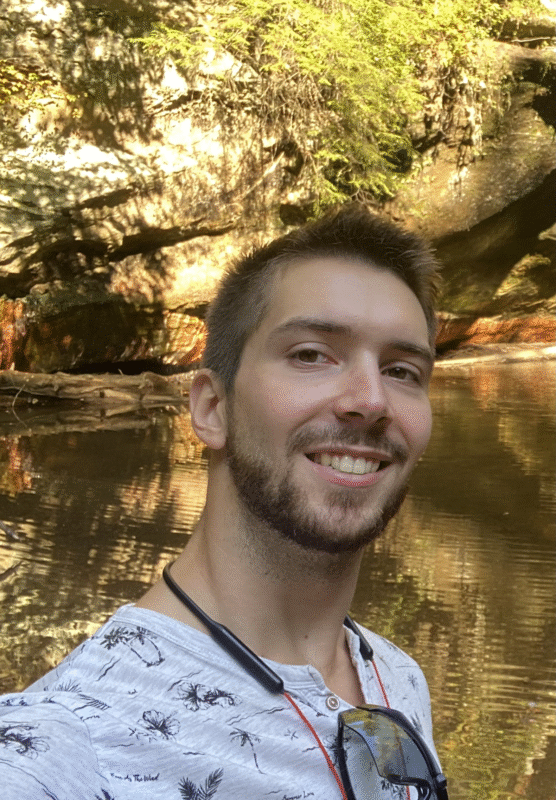Panayotis Manganaris

Graduate Research Assistant
Email: ptmangan@ncsu.edu
Office: BR 2101B
Broughton Hall
2601 Katharine Stinson Dr
Raleigh, NC 27607
Research Description
Conventionally wrought 316H (high carbon) stainless steel is one of only six materials certified by ASME for high temperature pressure vessel construction. The chemistry of 316H is among the best understood subjects in metallurgy and yet 316H shaped by additive manufacturing (AM) methods is effectively a novel material.
Its atypical properties must be due to micro-structural features resulting from how AM joins powdered 316H together into a net shape. In particular, microscopic stress fields result from the highly localized thermal gradients induced by AM methods such as Laser Powder Bed Fusion (LPBF). Understanding how this stressed microstructure relates to tensile performance is necessary to justify including AM 316H in the ASME code.
It is also necessary to understand how this relationship changes with the thermal history of the microstructure as this includes the effects of AM build parameters and post processing.
Therefore, a microstructure-based physics model encoding thermodynamic processes at multiple space and time scales is needed. Important micro-mechanical features include residual stress concentrations and anisotropic AM artifacts. Important morphological features include grain and phase size, distribution, and crystallographic texture. Important compositional features include chemical partitioning, and localized volatilization and gettering.
Combining Phase Field theory with finite element models (FEM) enables using statistical thermodynamics approaches based in Molecular Dynamics to predict engineering scale properties. Finally, all models must be validated.
Scanning Electron Microscopy (SEM) is used to validate the model of the grain size and orientation using Electron Back Scatter Diffraction (EBSD).
Transmission Electron Microscopy (TEM) is used to validate the model of the sub granular dynamics including dislocation migration, crack propagation, and the effects of voids and defects. This is necessary but not sufficient. Future work will aim to predict the microstructural evolution of AM 316H under stress while also accounting for the stress history, corrosion damage, and radiation dose. A good understanding of these relationships will enable engineers to manufacture optimally pre-stressed components in one or two repeatable operations. These methods should be applicable to other materials as well.
Background
Panos joined the MIX group in March 2025 as a Visiting Scholar and is admitted to the NCSU Nuclear Engineering Ph.D. program starting Fall 2025.
He completed his Masters in Materials Science at Purdue University as a Ross Fellow in the Data-Driven Design of Materials group. He worked on modeling properties of novels materials using machine learning and density functional theory. His thesis demonstrated explainable predictions of band-gap bowing as a function of doping at the A, B, and/or X sites of pseudo-cubic perovskite crystals. His models identified dozens of possible Lead-free pervoskites for use in solar cells and contributed to multiple peer-reviewed publications. His computational focus was inspired by a two year co-op internship at the Materials Fuels Complex at Idaho National Laboratory. At INL, he focused on advanced characterization of irradiated metals using electron microscopy. There, under Dr. Lingfeng He’s mentorship, Panos coauthored a paper mapping the oxidation states of salt corroded Nickle alloys. During this time he studied Mechanical Engineering at the University of Cincinnati with focus on systems design for extreme applications.
He always aspired to apply basic research to engineering challenges in an innovation oriented career.
Education
Nuclear Engineering
North Carolina State University
Raleigh, North Carolina
Materials Engineering
Purdue University
West Lafayette, Indiana
Mechanical Engineering
University of Cincinnati
Cincinnati, Ohio
